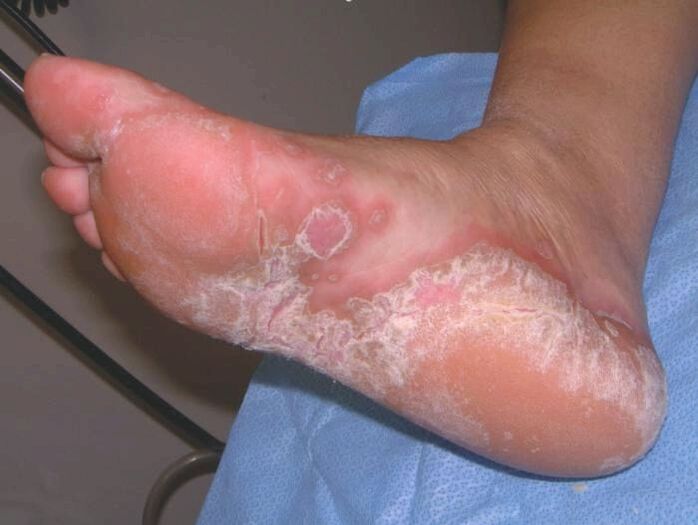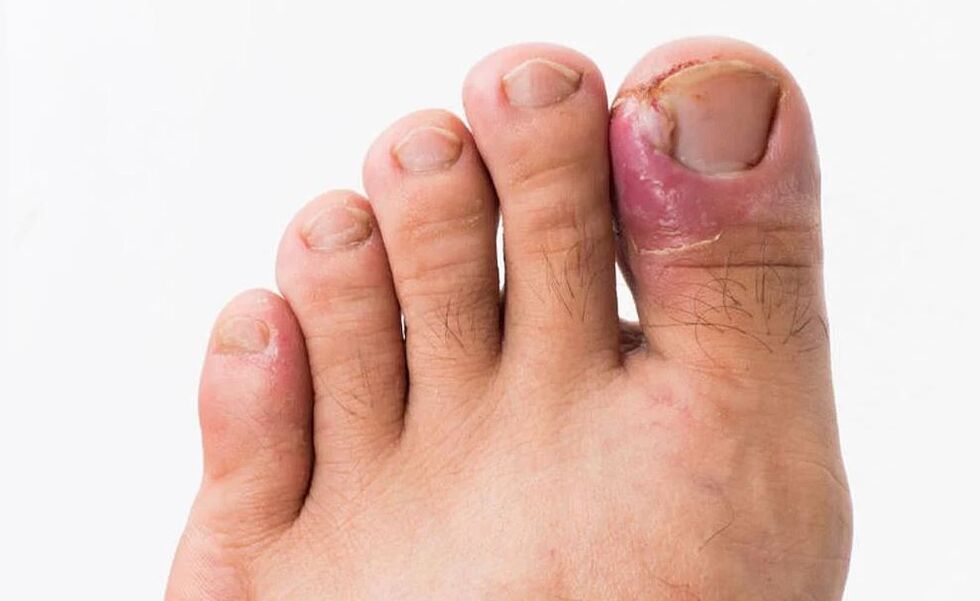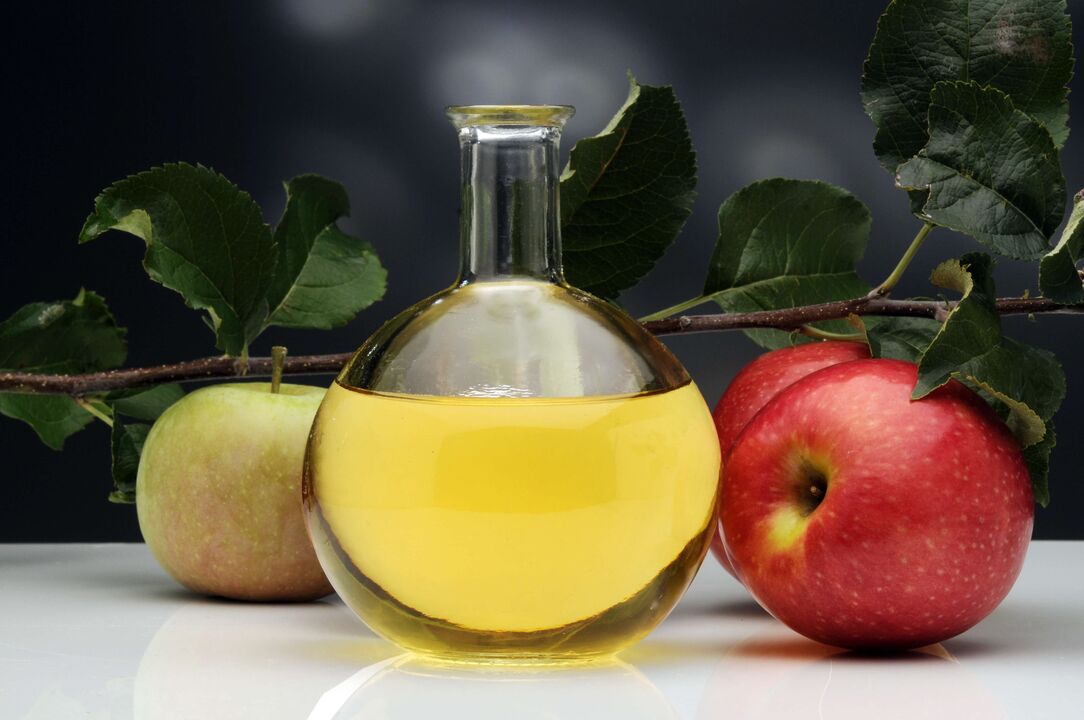Hi dear readers. The appearance of the fungus is quite common and causes significant inconvenience to carriers. The problem needs to be solved. And how to do it - now you can find out. Let’s see how to treat foot fungus at home with folk remedies. Remember, it is better to prevent foot fungus than to treat it later. You should not self-diagnose or self-medicate, and be sure to see a doctor if you have the slightest suspicion of a fungus.
Leg fungus - what is it
The fungus is an infectious fungal lesion that localizes on the skin (mycosis) and nails (onychomycosis) and then spreads to other parts of the body and includes many types. Pathogens acting on the integument can be divided into the following types: yeasts, molds and dermatophytes.
It is very easy to get infected with foot fungus: it is enough to come into contact with a surface inhabited by a pathogenic fungus.

They live especially in the interdigital space. These can be floors in public places, other shoes, personal hygiene items, and infection through untreated pedicure devices during treatment.
A significant problem is not only the ease of infection, but also the extraordinary growth of microorganisms.
There are also factors that increase the risk of the disease:
- wearing permanent closed shoes, which is more characteristic of men;
- an environment of favorable temperature and high humidity for the survival of the fungi;
- violation of blood circulation in the lower extremities;
- weakened work of the immune system, which does not allow the body to be protected;
- regular visits to public places without prior hygiene measures;
- in the high-risk group - people with thin skin;
- increased sweating, which promotes the growth of fungi;
- hereditary predisposition;
- the high age of the potential carrier;
- cardiovascular disease, venous insufficiency;
- diabetes;
- goosefoot;
- uncontrolled drug intake;
- to be overweight;
- avitaminosis.
The initial symptom of a fungal infection is the formation of epidermal scales on the legs, through which further infection occurs, as well as severe itching. Other symptoms and their severity depend on the type of fungal pathogen and the extent of damage to the epidermis and its derivatives.
Trichophyton interdigital
In these types of lesions, exfoliation is often accompanied by fluid formation and an inflammatory process.
The fungus spreads over the entire surface of the foot, including the soles of the feet, sides, arches and toes, but an allergic reaction can also occur on the skin in the trunk, face, upper and lower limbs. Occasionally, damage to the area of the nail plates is observed.
Candida mushrooms
In a disease associated with fungi belonging to the genus Candida, the skin is surrounded by hyperemic (blood-filled) and edematous skin that exfoliates the infected area. Blisters with serous and purulent contents are formed in the peripheral region.
Trichophyton is red
The pathology is manifested by infection of the interdigital folds, while fungi first multiply in the tightest interdigital folds.

Unlike previous types of fungal microorganisms, it causes multiple damage to the nails.
The danger is also expressed by the fact that the fungus can multiply in large skin folds (inguinal, gluteal, etc. ).
However, symptomatology depends not only on the type of disease but also on its clinical form, of which there are several!
Deleted form
Manifestations: slight peeling between the fingers, cracks are small and do not cause discomfort.
squamous
Manifestations: Exfoliation also extends to the lateral surface of the legs, accompanied by itching, due to the thickening of the stratum corneum of the buttocks, an alleged gloss is observed.
Hyperkeratotic form
Manifestations: formation of rashes in the form of dry papules and plaques, moderate itching, white scaly layers.
Intertriginal form
Manifestations: redness and swelling after maceration, burning and itching, with a clear diaper rash.
Dyshydrotic form
Manifestations: formation of many blisters with thickened membranes, hyperemia and edema reminiscent of acute eczema.
To avoid being infected with fungal parasites, preventative measures should be taken to help protect you.
- Keep your feet moderately dry and cool to prevent the growth of microorganisms.
- We recommend washing your feet several times a day with warm water, always with soap, and then, after washing, wipe your feet dry over the entire surface, paying particular attention to the space between the toes.
- In public places, it’s a good idea to wear personal slippers and at least sometimes go home barefoot to make your skin breathe.
- Wear extremely comfortable, easily ventilated and practical shoes, preferably made of natural materials.
- Both stockings and socks should be changed as often as possible if you have a problem with excessive sweating.
- The presence of bad habits and irrational nutrition significantly reduces the resilience of the immune system to various lesions, so bad habits must be eliminated and nutrition improved.
How to treat foot fungus with folk remedies
There are a number of popular tools for combating fungal infections of the foot.
Baking soda
Antifungal agent based on baking soda. To prepare it, you need to make a 1: 1 oat-like mixture of baking soda and water, which should then be applied to the affected areas for 15 minutes. After using soda, it is recommended to wash the skin and use powder.

Garlic
Garlic is an effective cure even in the late stages of the disease. The covers can be rubbed with halved garlic or a mixture of butter and garlic can be used.
Coffee
Strong natural coffee-based baths are used only before going to bed. They soften the skin and make it more sensitive.
Vinegar
In this situation, it is difficult to overestimate the benefits of any type of vinegar: the usual 9%, wine or apple. Make a 1: 8 solution, but before lowering your feet, you need to steam and clean your nails.

It is recommended to perform the procedure 5-7 times a day for faster recovery of the disease. The eggs can also be dissolved in a glass of vinegar and, after mixing with a teaspoon of butter, smeared on the affected areas.
Bloodweed
Celandine-based tinctures are also relevant in the form of both baths and compresses and ointments.
Calls for marigold
You can smear damaged legs with medicinal marigold tincture. In this case, the infusion should dry on its own and should not be wiped.
How to treat foot fungus - drugs and medicines
Remember that all medications should be taken only after consulting your doctor and only after your doctor has made a diagnosis that confirms the presence of a foot fungus.
How to treat foot fungus in children and during pregnancy
In children, fungal lesions of the foot show the appearance of bubbles, which then turn into erosion and first appear in the interdigital folds. Listen to your child: you may start to complain about burning and discomfort.
If you turn to folk remedies, wormwood decoction, salt bath, organ infusion, rowan leaf compression will help.
Many medications are prohibited during pregnancy, but there is still a list of ones that can help a woman in the position of sulfur-salicyl-tar ointment.
However, this does not mean that these medications can be used for sure, as allergic reactions are possible. This should only be done on the advice of a doctor.

























